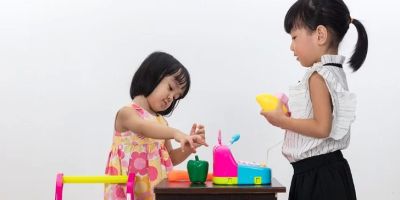Educational Toys to Help Children Understand Math
As a parent or educator, one of the most rewarding experiences is seeing a child develop an understanding and appreciation for math. However, many children find math intimidating or difficult to grasp. That’s where educational toys come into play. These tools are designed to make learning math concepts engaging, fun, and accessible. In this article, we'll explore how educational toys can help children understand math, making learning an enjoyable experience for both parents and kids alike.
1. Why Math Skills Are Important for Children
Math is a fundamental skill that affects many aspects of life. From budgeting and problem-solving to understanding scientific concepts, math is a vital part of our daily activities. By developing a strong foundation in math at a young age, children set themselves up for academic success and lifelong learning. Educational toys are a fantastic way to build this foundation, especially when they are designed with interactive learning in mind.
2. How Educational Toys Promote Mathematical Understanding
Educational toys that focus on math often make use of hands-on learning experiences that help children visualize and manipulate mathematical concepts. These toys are designed to make math feel less abstract, giving kids the tools to actively explore numbers, shapes, patterns, and problem-solving techniques. Whether it's through puzzles, games, or building blocks, these toys engage children in creative learning while reinforcing key math skills.
3. Types of Educational Math Toys for Children
There is a wide variety of educational toys available that cater to different age groups and skill levels. Below are some of the most effective types of math toys:
i. Counting Toys
Counting toys are excellent for younger children who are just beginning to learn numbers. These toys can include anything from colorful counting bears to abacuses. They help children understand the concept of counting, number recognition, and even simple addition and subtraction.
ii. Shape and Geometry Toys
Shape-based toys like tangrams, building blocks, and shape sorters are fantastic for teaching children about geometry. These toys help children recognize shapes, understand spatial relationships, and explore symmetry—all foundational skills in geometry.
iii. Math Board Games
Math board games such as "Sum Swamp" or "Math Bingo" are not only fun but also promote critical thinking and problem-solving. These games often involve basic arithmetic, which allows children to practice their skills in a social setting, making math feel like a game instead of a chore.
iv. Pattern and Sequence Toys
Patterning toys help children develop their understanding of sequences, a key concept in algebra. Toys like pattern blocks or sequence puzzles engage kids in recognizing and creating repeating patterns, laying the groundwork for more advanced mathematical thinking.
4. Benefits of Using Educational Toys for Learning Math
Using educational toys for learning math offers several benefits for children. Here are some of the key advantages:
- Engagement: Toys make learning math enjoyable and interactive, which keeps children engaged and motivated to learn.
- Hands-on learning: These toys provide tactile experiences that help children grasp abstract mathematical concepts.
- Encouraging problem-solving: Many math toys require children to think critically and solve problems, which develops their cognitive abilities.
- Building confidence: As children master new math skills through play, they gain confidence in their ability to tackle more challenging concepts in the future.
- Supporting independent learning: Educational math toys encourage children to explore and learn independently, fostering a love of learning that can last a lifetime.
5. How to Choose the Right Educational Math Toys
When selecting educational toys for math learning, it’s important to consider the child’s age, interests, and the specific math concepts you want to focus on. For younger children, toys that introduce basic counting, number recognition, and shapes are ideal. As children grow older, look for toys that promote more advanced skills such as multiplication, division, or even basic algebra.
One of the key factors in choosing the right toy is ensuring that it offers a challenge while still being fun. A toy that is too easy will not engage a child, while a toy that is too difficult may lead to frustration. Look for toys that provide opportunities for the child to advance at their own pace while also offering enough challenges to keep them engaged.
6. Real-Life Examples of Success Stories with Math Toys
Many parents have shared how educational math toys have significantly improved their children’s understanding of math. For instance, a mother of a 7-year-old who was struggling with basic addition shared how a simple counting game helped her child understand how to add numbers within five. Her son became more confident, and his math skills improved within weeks. Stories like these show just how effective these toys can be in promoting mathematical understanding and confidence in young learners.
Additionally, schools and educators have started incorporating these types of toys into their curriculums to support children who struggle with traditional learning methods. Whether it’s through interactive math games in the classroom or providing math-based puzzles for after-school activities, these tools have been successful in reaching children who might not thrive with just textbooks and lectures.
7. Where to Buy Educational Math Toys
If you’re looking to add math toys to your child’s collection, there are many online and in-store options available. Websites like Knight Toys offer a wide range of educational toys tailored to different age groups and learning levels. These toys are not only designed to teach math but to make it fun and engaging. Be sure to explore different brands and read reviews to ensure the toy you choose is both educational and high quality.
Conclusion
Educational toys are a great way to help children develop a love for math while reinforcing important concepts in a hands-on, interactive way. Whether it’s through counting toys, geometry games, or pattern puzzles, these tools make learning enjoyable and effective. By choosing the right toys for your child’s age and skill level, you can help them build a strong foundation in math that will support their academic journey and beyond.





